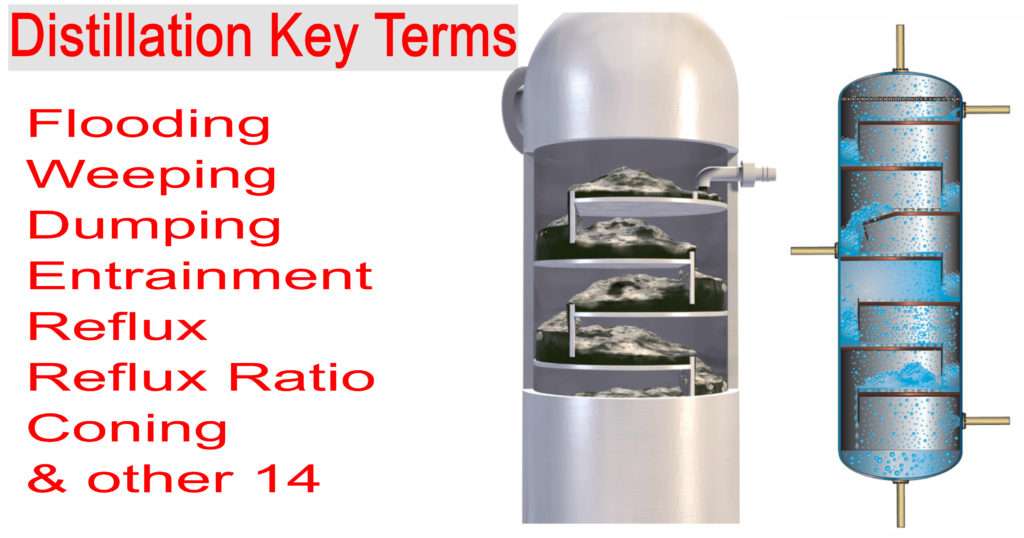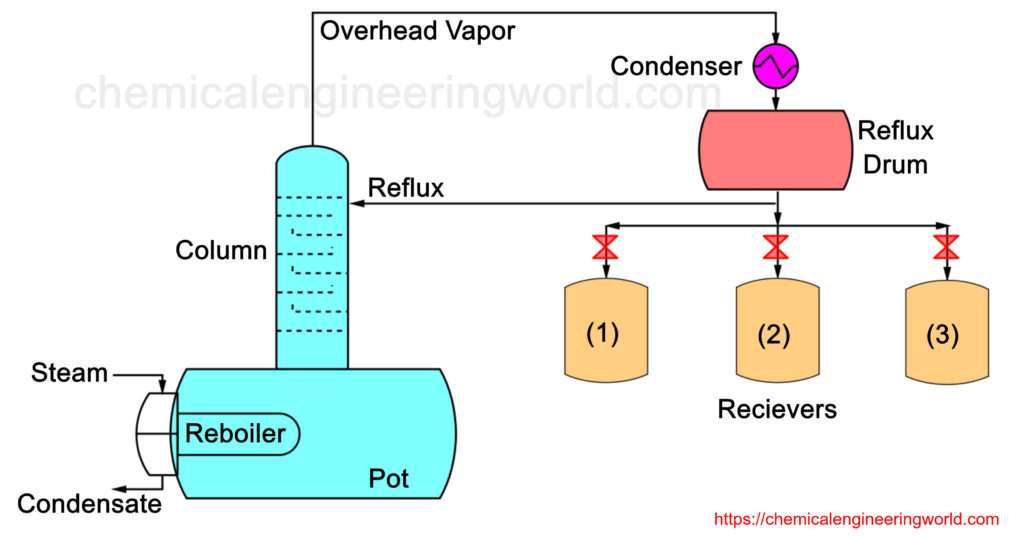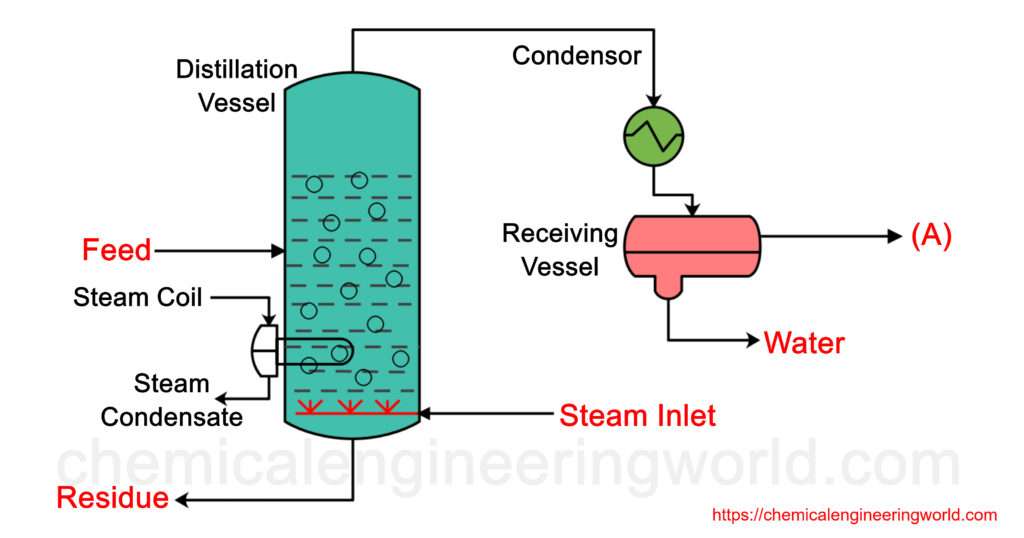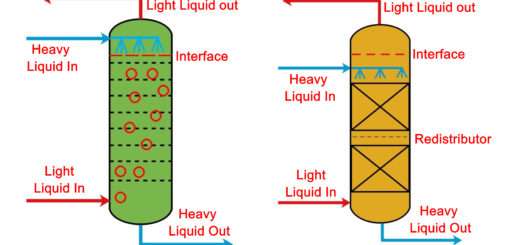Distillation Key Terms

Distillation Key terms:-
Cross flow :
In this arrangement liquid flows across the plate and falls on the plate below through a channel (downcomer) at one side of the plate.
Split flow :
Liquid flow across the tray is split into two or more flow paths.
Reverse flow :
Liquid flowing from the inlet on one side of the tray reverses its direction at the other side of the tray and flows back to the downcomer on the same side of the tray where the inlet is located. To achieve such flow path a center baffle is provided.
Radial flow :
In radial flow, liquid flowing radially from or to, an inlet (or outlet) located at the centre of the tray to or from downcomers (or inlets) at the tray periphery.
Dual flow :
In such flow arrangement both liquid and vapour pass through the perforations on the tray. No downcomers are provided.
Liquid throw :
The horizontal distance travelled by the liquid after flowing over a weir is called a liquid throw.
Double pass :
It is a split flow tray with two liquid flow paths on each tray. Each path handles half of the total liquid flow.

Blowing :
It is a condition where the rising vapour punches holes through the liquid layer on a tray and carries large drops and slugs of liquid to the next tray.
Coning :
It is the condition where the rising vapour pushes the liquid back from the top of the hole and passes upward. In coning condition vapour – liquid contact is poor.
Dumping :
It is the condition caused by low vapour flow rate where all the liquid falls through some holes to the tray below, while vapour rises through the remaining holes.
Raining :
It is a condition similar to the dumping. No liquid flows over the weir. Difference between dumping and raining is that liquid trickles through all holes at a uniform rate. Vapour flow rate is also very high.
Weeping :
It is a condition when the vapour flow rate is not large enough to hold all the liquid on the tray. Part of the liquid flows over the outlet weir while the rest falls through the holes.
Flooding :
It is the condition which gives rise to sharp decline in efficiency of the trays and sharp increase in pressure drop. Flooding results due to excessive carryover of the liquid to the next tray or inability of the system to convey the liquid flow to the tray below.
Seal point :
It is the point at which weeping changes into raining condition.
Oscillation :
Wave type motion of the liquid on the tray, perpendicular to the normal direction of flow is called oscillation.

Reflux Ratio :
The ratio of the amount of condensate being refluxed to the amount being withdrawn as product. Generally, the higher the reflux ratio, the greater is the degree of separation of the components in a distillation system
Injection regime :
It is the condition in which the liquid above the plate is in the form of individual drops dispersed in the vapour. The meaning is there is virtually no mixing in the main bulk of the liquid.
Reflux :
This still differs from the alembic in that multiple distillations occur in one single cycle. The addition of a column with bubble plates (?) between the condenser and pot allows vapor to condense and trickle back down to be distilled once again. Thus, the vapor is repeatedly cleansed and the resulting purity from one cycle is much higher than that from an alembic.
Stable regime :
It is the preferable hydrodynamic condition of the aerated liquid on a sieve tray. Gas liquid is good in a stable regime and the aerated mixture exists as a stable froth. Turndown ratio : It is the term used by designers to denote ratio of minimum allowable to operating throughput.
Condensation :
The process by which a gas or vapor changes to a liquid.
Entrainment :
Some entrainment always occurs in the normal operation of a tray. Entrainment affects tray efficiency and can cause flooding. The cross flow, reverse flow and double pass flow conditions.
Distillate :
A liquid condensed from vapor in distillation; a purified form, essence.
































